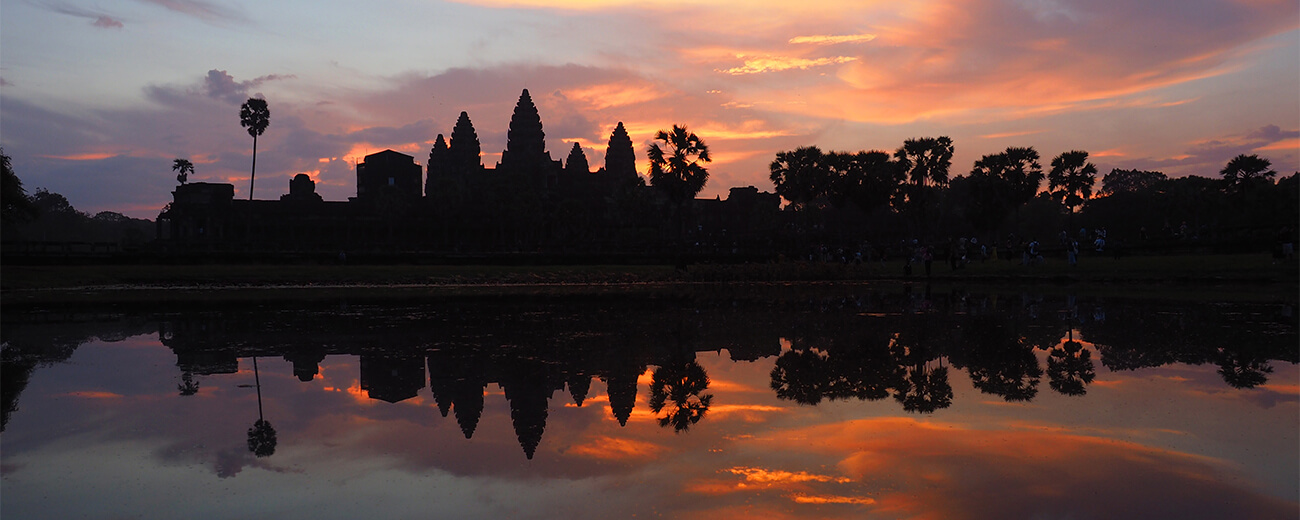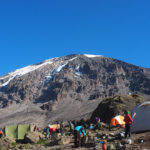Angkor, Cambodia
“After a serving of banana pancakes, I started the day in the Tomb Raider temple, Ta Proh.
The temple was really beautiful, swallowed up by the roots of the jungle
– and there were no sign of Lara Croft anywhere”
Angkor is an impressive temple complex in Cambodia and one of the largest religious monuments in the world measuring 162.6 hectares. It is named a “Heaven on Earth” as it is the “earthly representation” of Mt Meru, the Mt Olympus of the Hindu faith and the abode of ancient gods.
Angkor Wat is the main and largest temple in the ancient city of Angkor (which consists of approx. a thousand temples). Originally constructed as a Hindu temple dedicated to the god Vishnu for the Khmer Empire, it was gradually transformed into a Buddhist temple towards the end of the 12th century. Millions of people come here each year to see this temple and other incredible historic monuments.
Angkor Wat was on my bucket list for a long time… So when I saw how easy it is to get from Bangkok, Thailand to Siem Reap, Cambodia (just a 1 hour flight), I just could not miss it. I came there for 3 days (2 nights: first day I arrived at midday, last day left very late), which is completely enough from my point of view.
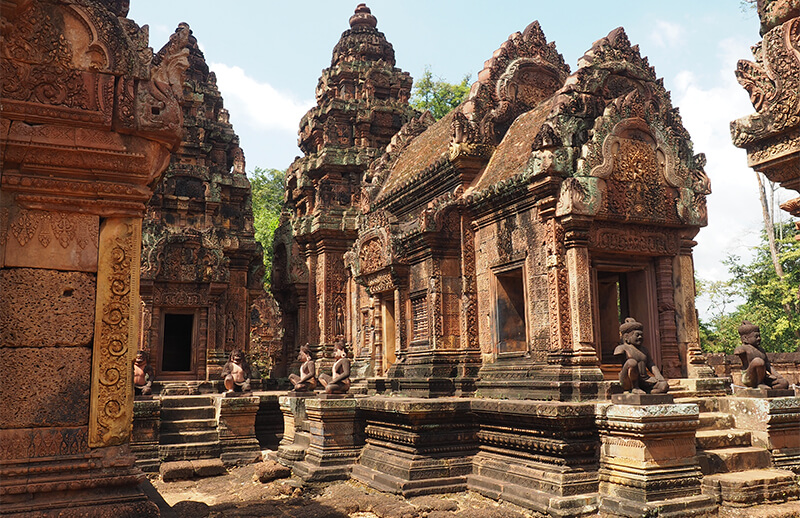

General notes:
1. Visa: you need a visa to visit Cambodia. You can do it online but be careful, go on the official website! I paid USD 110 (USD 70 admin fee) as I was not careful (did not see that it was not an official website)! You can obtain the visa for just USD 38! It is easy to do visa on arrival as well, just have enough USD with you (you don’t really save time when you do it online).
2. Money: Cambodia is very cheap. USDs are used everywhere. Mostly cash pays everything (restaurants, hotels, tuk tuk). For me the only ATM that worked was Canadia (and only my Swiss Postcard. Maestro card did not work), so better bring cash (USD) with you. Bring enough, as there is a USD 5 surcharge per withdrawal. In some upscale shops and restaurants, it is possible to pay by credit card but don’t count on it. You would need approx. USD 300 cash for 3 days, incl. accommodation, food, transport and light shopping.
3. Visitor pass: A 3-day pass for Angkor Wat Archaeological site costs USD 62. You can pay it by credit card.
4. Accommodation: I stayed in the Chamraeon Home (it was clean, inexpensive, with big rooms and well located – you can walk everywhere from there). Accommodation was USD 15 per night without breakfast.
5. Transport: Transfer from the airport to hotel was USD 6 (a tuk tuk). Tuk tuk costs approx. USD 25 per day with sunrise option (USD 18 + USD 5 for a sunrise or sunset). But tuk tuk drivers are quite annoying if you want to change the itinerary and go to some temples in a different order than initially proposed. My driver got really angry as I wanted to go to the main temples first to avoid the crowd and then to come back to the ones I missed. They either do a short circle (USD 15) or a long one (USD 18) – one temple after another. They don’t want to take them in any different order unless you agree upon it in advance (which is very difficult to do as you have no clue about what the right order is before coming to Angkor).
Highlights of the trip:
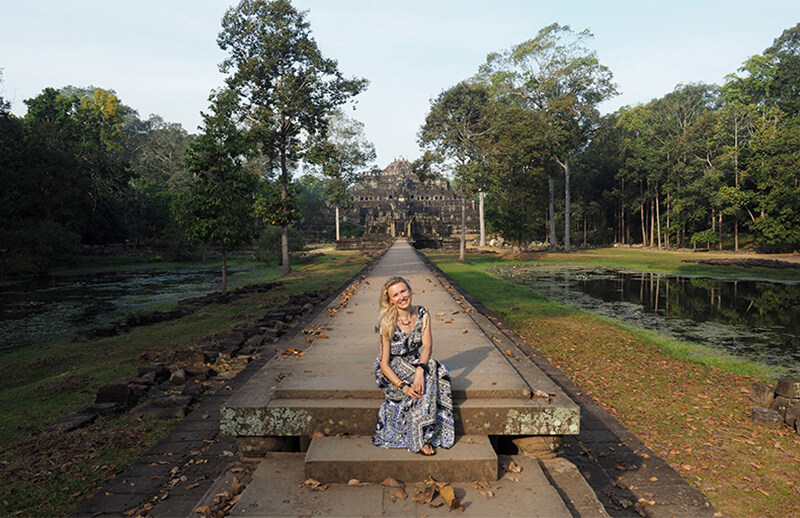
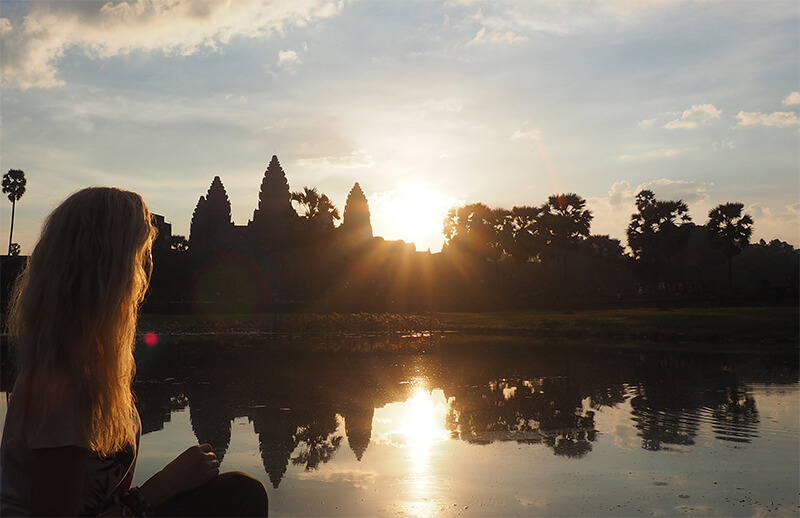
Day 1:
I arrived from Bangkok (AirAsia) at 11am – the flight was ok, just 1 hour and on time but they are very strict with the luggage allowance (7kg only and 1 piece of luggage). I was able to bring a much heavier bag on the way back (as I did quite a lot of shopping) but it was luck.
My hotel driver met me with a tuk tuk (transfer to the hotel was included in the accommodation price). It was quite a cool 30-minute drive to the hotel.
In general, I actually loved my tuk tuk experiences in Cambodia.
I checked in at the hotel at midday, bought an ice cream on the way (didn’t have lunch) and at 1pm bought a three day pass at the temple entrance (price is USD 62 and you can pay by card).
I went to the Angkor Wat temple (the main temple) at 2pm and opted for a guided 1-hour tour for USD 10 (can get it at the entrance). A guide is useful mainly for taking photos and a little for storytelling. These guides (who are standing at the entrance to the temple) are not very knowledgeable and mostly focused on tourist turnover. You are better off reading the Lonely Planet book yourself.
However, Angkor Wat temple is an impressive temple and I ended up spending 2 hours there.
After the Angkor Wat temple, I went to the Bayon temple. The Bayon’s most distinctive feature is the multitude of serene and smiling stone faces on the many towers: 54 Gothic towers are decorated with 216 gargantuan smiling faces of Avalokiteshvara. I really liked it but it is rather small and 30 min was enough for me. There were a lot of groups there at the sunset as it is supposedly a good place for the evening sun (not sure about it as there is no view from above and the faces of the temples are in the shadow rather early).
At 4:30pm, I went to see the sunset on the hill – Phnom Bakheng, known for its sunset view. It is the most popular spot in Angkor at the end the day. It is a 70-metre-high hill and it was the first of the temple-mountains built in the Angkor complex. Only 300 people are allowed in at any one time so one should arrive 1-2 hours before the sunset to guarantee a spot. People line up for 2 hours but this massive queue makes no sense though as the sunset is over the forest and the Baray reservoir and you can see it from the hill as well and do not need to be in the temple. Angkor Wat temple is also visible from this hill but it is far away. My recommendation is to go up the hill, have a look at the forest and the lake and the setting sun and go back down (i.e. do not wait in the queue to get into the temple).
In the evening, I dined in a very nice restaurant with the serene name – Haven. The food was amazing but price wise it was rather high (for Cambodia): USD 30 with an appetizer (calamari), main dish (curry), dessert, fruit juice, coffee, and water. Afterwards, I walked around in Siem Reap – I really liked this small town – not as crowded and loud as Bangkok, you can walk everywhere and it has a very cool ambiance buzzing with life. The downtown area is pedestrian friendly and easy to navigate. The town is nice for shopping and I ended up buying a lot of souvenirs and a dress in a French shop. There are many French people there actually. French tourists mostly but also some who moved there from France and opened a bar, restaurant or a shop.
Day 2:
I woke up at dawn (4am) to see the sunrise at Angkor Wat. I arrived 40 min before sunrise (you need to have a headlamp to walk) to get a good spot as there were a loooot of people. It was rather cloudy but still nice. I would definitely recommend the sunrise over the sunset. After the sunrise at around 8 am, I had breakfast in one of the restaurants next to Angkor Wat. It was ok, but too touristy. The banana pancakes were nice though. I saw almost all the major temples that day, starting with the “Tomb Raider” temple (where that movie was filmed) – Ta Prohm temple. It was very nice, very photogenic with all these roots as if it is “swallowed by the jungle”. This Buddhist temple was built in 1186.
It is a good idea to get there early before the crowds/groups arrive (they usually follow predefined itineraries and first go to Angkor Wat). I met a French guy there who was travelling around the temples on bicycle and could not see everything as the distances were huge. We made a lot of photos before the crowds arrived.


After the temples I went shopping in Siem Reap and met the same French guy for a drink and dinner that night. I like to meet new people when traveling: you meet, speak, have a good time and never see them again. But it’s actually cool, wouldn’t you agree?
Day 3:
I wanted to be sure that I wouldn’t miss the best sunrise in case there would be no clouds that time, so again I went to Angkor Wat to see the sunrise (another 4am rise!). It turned out to be another cloudy day but with a completely different light, which was nice too. I saw the remaining major temples (ended up spending a lot of time in the Preah Khan temple where a security guide did a whole photo shooting with me – very cool experience). Later, I went to another temple, which is rather far away but really beautiful – Banteay Srei.
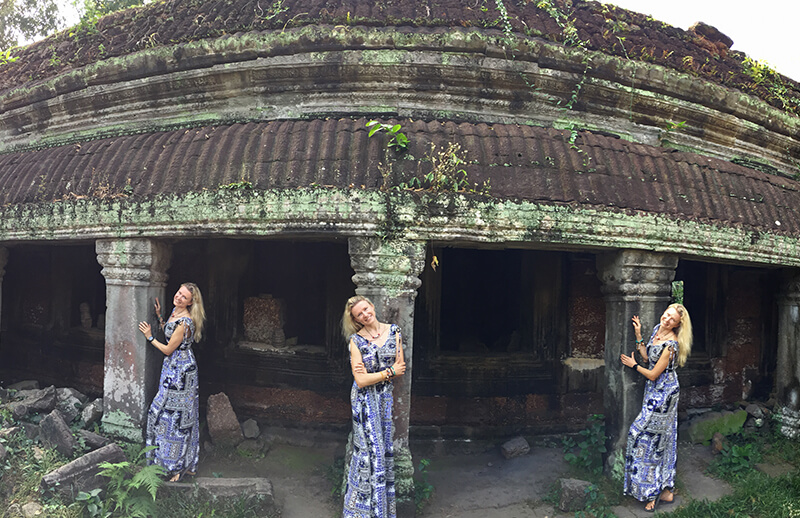

Banteay Srei is considered the jewel in the crown of Angkorian art. It is cut from red coloured stone. The stone carvings are considered the finest found anywhere on Earth. The construction of this temple began in 967 AD. It is one of the smallest sites at Angkor but one of the most beautiful. It is a Hindu temple dedicated to Shiva. Banteay Srei means ‘Citadel of the Women’, and it is said that a woman must have built it, as the elaborate carvings are supposedly too fine for the hand of a man.
I loved my long and fast tuk tuk ride there: wind, villages, amazing views…
After visiting all these temples, I still had some time for a drink in the evening before going to the airport (my flight was leaving at 10pm). I was rather dead when I came to Bangkok but all went smooth.
I can strongly recommend visiting the Angkor complex to everyone: truly impressive architecture and magical, spiritual atmosphere. After this, it was difficult to impress me with the temples in Thailand. Also, Siem Reap is a great destination on its own: cool vibes and great food.
12.11.2019

